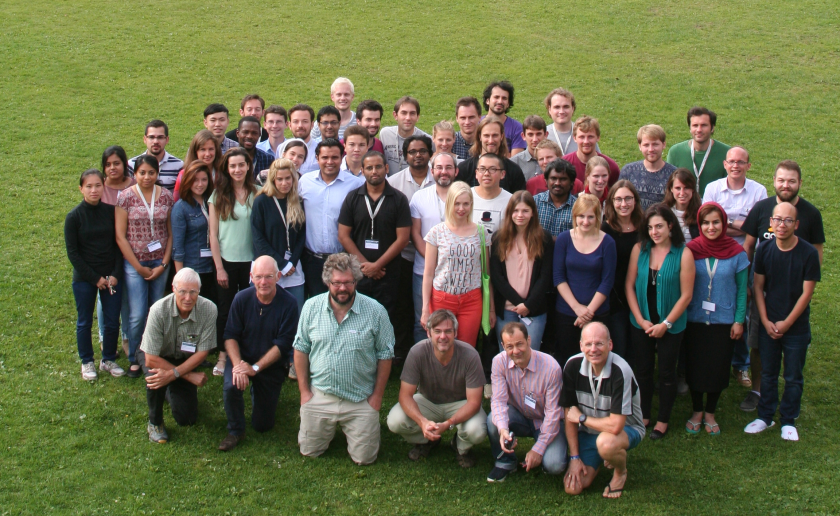Registration open for Quantsol Summer School

Learning about solar fuels and photovoltaics goes green. The summerschool takes place from 3. to 10. september 2017 in the idyllic Kleinwalsertal, Austria. © Quantsol/HZB

Last year’s Quantsol students came from all over the world. The location offers space for 56 students. © Quantsol/HZB
Newcomers and young scientists in solar energy research can register now for the 10. International Summer School on Photovoltaics and New Concepts of Quantum Solar Energy Conversion (Quantsol). The school is organized by the Helmholtz-Zentrum Berlin and the Technical University of Ilmenau and will be held from 3. to 10. September 2017 in Hirschegg, Kleinwalsertal, Austria. Applications can be submitted through the school’s homepage until May 21st, 2017.
“The Quantsol summer school offers a very comprehensive introduction to the field of photovoltaics and photocatalysis and is a great learning experience and a “must attend” for PhD students and postdocs in their early career. In the past, we have received an overwhelmingly positive feedback leading to oversubscription of the school every year” says Prof. Dr. Klaus Lips from Helmholtz-Zentrum Berlin.
Invited speakers, all internationally recognized scientists from leading world institutions, will give lectures covering topics on the fundamental principles of the conversion of solar energy into chemical and electrical energy as well as the physical and technical challenges of their technological implementation. Another focus lies on solar-specific material science and their characterization. In addition, the school will give hands-on training on how to build your own solar cell as well as an introduction to solar cell simulation.
If you are interested to participate in the Quantsol Summer School you can find much more detailed information on our homepage or in our flyer (download right).
The deadline for application is May 21, 2017. Here you get directly to the application form.
If you will not be able to attend this years’ Quantsol summer school – no worries - the next school has already scheduled for September 2 to 9, 2018.
red.
https://www.helmholtz-berlin.de/pubbin/news_seite?nid=14656;sprache=en
- Copy link
-
Sodium-ion batteries: New storage mechanism for cathode materials
Li-ion and Na-ion batteries operate through a process called intercalation, where ions are stored and exchanged between two chemically different electrodes. In contrast, co-intercalation, a process in which both ions and solvent molecules are stored simultaneously, has traditionally been considered undesirable due to its tendency to cause rapid battery failure. Against this traditional view, an international research team led by Philipp Adelhelm has now demonstrated that co-intercalation can be a reversible and fast process for cathode materials in Na-ion batteries. The approach of jointly storing ions and solvents in cathode materials provides a new handle for the designing batteries with high efficiency and fast charging capabilities. The results are published in Nature Materials.
-
New Helmholtz Young Investigator Group at HZB on perovskite solar cells
Silvia Mariotti starts building up the new Helmholtz Young Investigator Group ‘Perovskite-based multi-junction solar cells’. The perovskite expert, who was previously based at Okinawa University in Japan, aims to advance the development of multi-junction solar cells made from different perovskite layers.
-
Hydrogen storage in MXene: It all depends on diffusion processes
Two-dimensional (2D) materials such as MXene are of great interest for hydrogen storage. An expert from HZB has investigated the diffusion of hydrogen in MXene using density functional theory. This modelling provides valuable insights into the key diffusion mechanisms and hydrogen's interaction with Ti₃C₂ MXene, offering a solid foundation for further experimental research.
